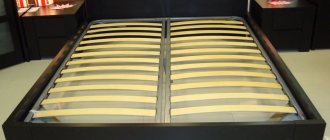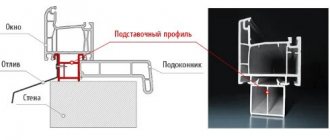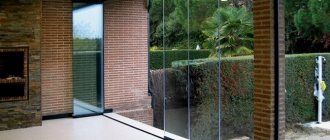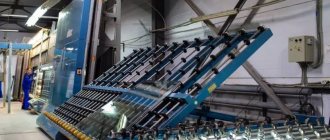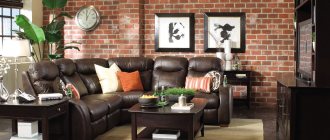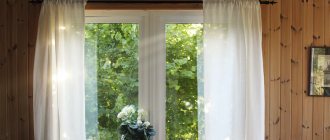To achieve a complete harmonious appearance of the windows and protect the façade from precipitation, it is necessary to select and order the installation of window sills. For all tides there is one installation technology, and it does not matter what material they are made of. It is necessary to remember one important point: the sills must be installed at the same time as the windows, otherwise it will inevitably be necessary to restore both the windows and the façade of the building.
Low tide as a window protective element
The ebbs are installed on the outside of the window, with the condition that the lower edge of the window frame should not be lower than the outer edge of the window opening. This must be done in order to prevent blocking of the special holes that are located on the outside of the box and drain water. It is advisable to install the ebb tides under the window in order to exclude any possibility of water penetration at the junction.
When installing ebb tides, the main thing is to choose the right angle of inclination. Window ebbs are installed at a slope of at least 10 degrees perpendicular to each other. They are placed in a mortar mass. From such low tides, rainwater, condensation and snow flow down unhindered. It is imperative to seal the joint between the ebb and window frame, as well as the ebb and wall. The seam is glued using a special film or caulking.
Poorly performed work or failure to carry it out can lead to the destruction of the façade and windows by moisture, since the main function of the ebb tide is to prevent moisture from passing through. If the ebb length exceeds 1.5 meters, its ends are provided with expansion joints, the width of which should be 0.5 centimeters, which are then filled with mastic.
Impeccable window installation includes the correct installation and sealing of the ebb, which ensures high-quality drainage of water outside the wall.
After completing the installation of the window structure in the wall, as well as sealing the junction areas of the thermal insulation with polyurethane foam, it is also necessary to perform another important procedure - anti-moisture insulation, which is performed both outside and inside:
- On the inside, directly under the ebb, insulation is made from a vapor-proof film by gluing it to the window frame and wall. The installation of the sill itself directly depends on the material from which it was made, however, almost any type of sill can be glued to the wall using mounting adhesive.
- From the outside, sealing the junction of the frame to the wall is done using vapor-permeable tape, gluing it so as to also ensure tightness in the corners. In addition, the edge of the ebb is inserted into a special recess at the junction of the latter with the window frame.
In places where it abuts a wall or insulation layer, the side edges of the ebb should be protected with an elastic expanding tape, which ensures high and constant tightness of the connection.
When installing a plastic sill, it is possible to use a seam connection method between it and the window frame. However, such a connection should not be made in the area where the drainage holes are located in the frame. This connection must be sealed with silicone and very carefully insulated under the PVC sill. A correctly installed sill must extend under the window; for this purpose, there is a special profile on the bottom of plastic windows, to which the sill is attached. As for wooden windows, their design provides for a special quarter. Fastening is carried out using screws or rivets.
Installation of metal ebbs is carried out along the lower edge of the frame on the outside of the window in such a way that one rib of the ebb is inserted under the lower part of the frame into a special groove, then secured with self-tapping screws on the stand profile. For metal sills, you should use special window sill pads that have soundproofing properties. Also, the ends of the metal flashings are embedded in the wall, while bending the edges of the flashings in a C-shape.
When using ceramic or stone sills, the places where they meet the walls are sealed with mastics.
Installation of ebb and flow sills on windows, balconies and loggias allows you to protect the facade of the building from the adverse effects of precipitation, and also ensures waterproofing of the installation gap between the window opening and the wall. Installing a window without ebb will result in the structure gradually collapsing under the influence of moisture, so installing windows without ebb is a waste of money.
Why are drainage systems needed and is it possible to do without them?
The external window sill usually has an S-shaped section and consists of three sections:
- the upper part, which is attached to the wall or window frame;
- shelves with a slope, which is directly exposed to precipitation;
- dripper - a part that is bent down and is designed to drain water.
Main profile tasks:
- collection and drainage of water from rain, snow flowing from windows, or from precipitation falling on the low tide shelf;
- protection of the window mounting seam from ultraviolet rays and moisture;
- decoration of the facade of the building;
- preventing cold from entering the room during the winter season.
Installing slopes protects walls from mold, mildew, and premature destruction, prevents plaster from falling off, and extends the service life of window structures. The decorative element helps to hide installation seams and irregularities, providing an attractive appearance of the facade, which is especially important for country houses and cottages.
In most cases, in private and apartment buildings and non-residential buildings in Russia, quarter-quarter window designs are provided. The fact is that the thickness of the main walls is greater than the thickness of the double-glazed window. Accordingly, the window unit is mounted closer to the room. The side that remains is called the window quarter. In such structures, regardless of the material of the window frame, drainage is required.
You can do without a window sill only if the window:
- mounted flush with the facade, and a canopy was built on top of the opening;
- has a non-standard configuration.
Drainage systems are installed during the construction of a new building or replacement of windows. Sometimes companies that install double-glazed windows offer installation of slopes and external window sills as an additional service. This option is very convenient. If the organization that installs the windows does not perform such work, and it is difficult to find a separate specialist, you can attach the drainage strip yourself. To do this, first of all you need to select and buy a shaped element.
Low tide as a decorative window element
In addition to its immediate main task, as a rule, modern tides also perform a decorative function. When selecting window sills, it is necessary to take into account the color of the window and the design of the building facade, while the window sills should look quite neat and not provocative. A truly high-quality ebb means, under all other conditions, that it should be installed very simply, without creating any additional difficulties.
Thanks to modern technologies, manufacturers can now offer their customers shimmers of different colors. It's no secret that the correctly selected type of ebb can improve the overall appearance of a window opening.
The tide configuration includes:
- main part located at an angle to the plane;
- bends into which fastening is made;
- drippers that remove moisture.
The capabilities of modern equipment for the manufacture of castings make it possible to withstand a fairly wide range of sizes and configurations. The flashing is made according to the configuration of the window, and the width of the flashing must meet the requirement that this product protrudes from the wall by 3-5 centimeters.
Most manufacturers of window sills produce standard models of sills that are adapted for various windows, but this does not mean that it is impossible to find your own type of sill for non-standard projects. Today, window companies are working to expand the range of products and services that allow you to select a specific type of material. Basically, the types of window sills differ only in their overall dimensions, texture and color scheme. Therefore, in the first case, even the most difficult situation can be solved by cutting off the required amount of material and further installing it.
Thanks to the variety of textures and colors (designs), ebb tides fit beautifully into any image and facade of the house. Manufacturing companies claim that cases of non-standard solutions when creating window sills are quite common. All this ceases to be a problem due to the widespread development of production capabilities, as well as the quality of the material used for the work. Ultimately, the client receives exactly what he planned to see in his home.
When choosing individual configurations of window sills, as well as conventional ones. the manufacturer provides all the necessary information that allows you to get a general idea of the benefits and quality of these structures.
Installation and material of flashings depend on climate
When choosing a tide for your window, you must also take into account the climate zone in which you live. If the tides are to serve in harsh climatic conditions, then it is necessary to pay close attention to the ability of the material from which they are made to withstand sudden temperature changes. If you ignore this aspect, then the window sills, and the windows themselves, will not last as long as we would like. In the rather harsh climate of Russia, when selecting and installing ebb tides, you should definitely focus on increasing their endurance.
Criterias of choice
If you are replacing or installing a plastic window in an apartment building, then you should choose an external sill similar to those already installed.
When the owner of a private home needs a part, the following parameters must be taken into account before purchasing:
Material. For a plastic window, it is recommended to use plastic sills. A galvanized steel part is more suitable for a wooden frame.- Difficult to maintain. It is better to choose low tides that do not require careful maintenance.
During operation, the external ebb becomes dirty, so cleaning will be necessary. The main thing is that this process can be completed with minimal effort and cost. - Light weight. A product that is too heavy will place a heavy load on the façade. And it will need a supporting structure.
- Is there a special coating? It is recommended to choose ebb tides with platisol coating. It increases the strength of the part and improves its appearance.
- Manufacturer's brand. Well-known suppliers value their reputation and supply quality products.
You should also pay attention to the color of the tint. It must be combined with the facade. Technological parameters for choosing a sheet - width, length, possibility of installing special plugs.
Installation of ebb tides - advice from the experts
Those who are faced with the issue of installing drip tides today should know a few more subtleties that will ultimately allow you to obtain a high-quality and aesthetic product, as well as save time and money during construction and installation work.
- For high-quality installation of ebbs, it is necessary to take into account that the window sill does not have a counter-slope, which is a common defect in the work of facades, otherwise moisture will not drain, but accumulate on the surface of the ebb.
- It is recommended to select a quick-drying sealant; silicone-based compounds are also good. If additional sealing of seams is necessary, along with silicone sealants, polyurethane compression tapes are also used.
- To prevent the mounting foam from raising the window sill, it must be fixed during drying by pressing the sill.
- It is unacceptable to screw the sill onto the window frame with screws or nail it, which is a fairly common practice.
- Window sills should protrude beyond the window, balcony or loggia, both in width and length, to prevent water from penetrating inside.
- When installing the ebb, be sure to check that it goes into the wall with side bends (under the slopes), which guarantees that water will get from the slopes and from the window to the ebb, and this will be an additional fastening along the edges. To ensure this condition, it is optimal to install the drip lining before finishing the external slopes.
- In the case of large and wide ebbs, it is necessary to make additional fastenings on the wall, on which the so-called external window sill will be placed.
- Before installing the drip tray, there is no need for plastering work, since it is laid on polyurethane foam or an adhesive base.
- Installation of ebb tides is carried out with a slope of 10 0 from the plane of the window.
- High-quality installation of ebb tides can only be done in good, clear weather.
Installation of ebb tides - the final touch
A properly installed drip sill completely prevents water from getting onto the wall under the window, removes this water and must be securely fastened so as not to create noise in windy weather and to suppress the noise from raindrops to the maximum.
It should be remembered that poor-quality installation of ebbs will allow water to penetrate through the lower assembly seam, which is why, over time, the mounting foam (sealant) will become damp and the window, balcony or loggia will depressurize, and unwanted moisture will begin to enter the room.
As experience suggests, high-quality installation of sills can be obtained by turning to the services of window companies that are also capable of carrying out this work in hard-to-reach places using industrial climbing. It is also possible to install the drip light when installing the window, but this point must be specified in the contract with the window company. The finishing of the slopes can also be stipulated in the contract, but if the apartment is already undergoing renovation, you can save on this type of work if the slopes are plastered by your own workers.
Window tinting, at first glance, is an insignificant detail, but it can make a window of truly high quality, complete and aesthetically attractive. Moreover, this truth is true for any type of window, be it plastic, aluminum, or wood. Today, outdated tin window sills have been replaced by more practical and durable materials, such as aluminum, galvanized steel (including with various coatings), stone, plastic, ceramics, copper and others. But still, the main rule that must be followed when choosing a window sill is: the ideal sill should be considered to be one made from a material that can qualitatively demonstrate the capabilities of waterproofing in any climatic conditions. In addition to sills, to operate the full time period of a plastic window, it is necessary to install it on it visors, side plastic plugs that will protect it from moisture and other precipitation.
The WINDOWS OF COPPER portal recommends: Which window sill is better, plastic or metal?
2. Colors
By and large, your choice will be determined by exactly what material you chose to purchase the ebb from, as well as the availability of a color suitable for you. It is clear that when installing, say, a brown window block that imitates wood, it would be stupid to install a white tint. However, do not forget that the color palette of the tides is not the same and can vary greatly depending on the type. This, of course, is trivial, but if you want an exclusively red aluminum tint, you won’t get what you want. True, after listing the main features of each type, you will certainly be prepared for what awaits you on the market and decide on ideas in advance.




